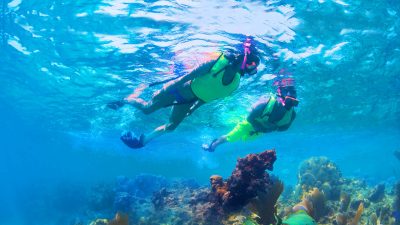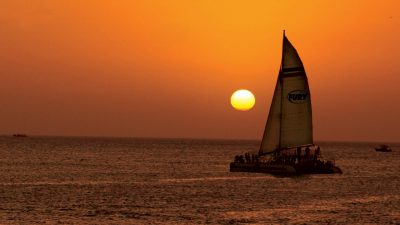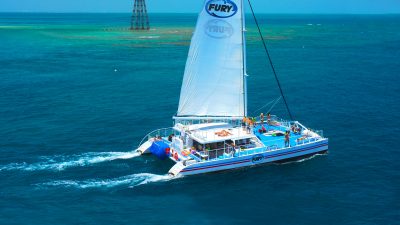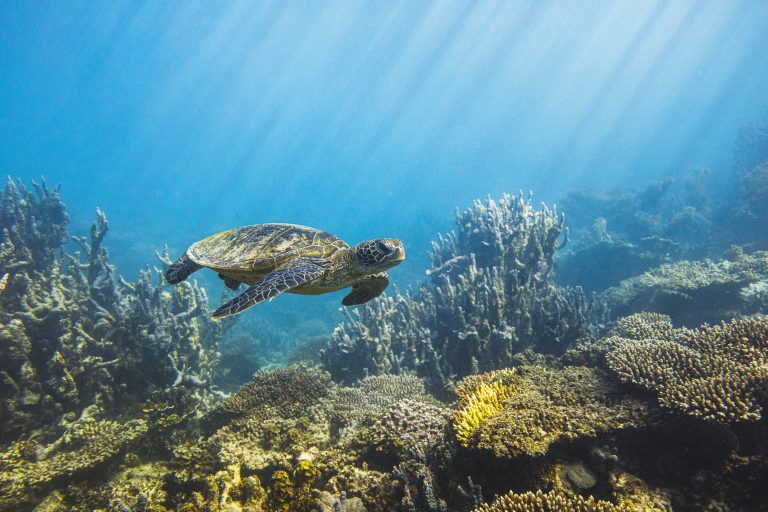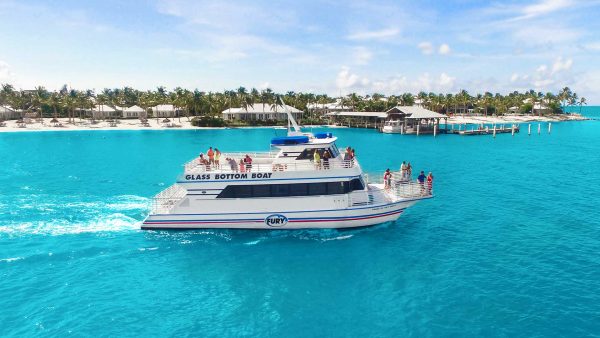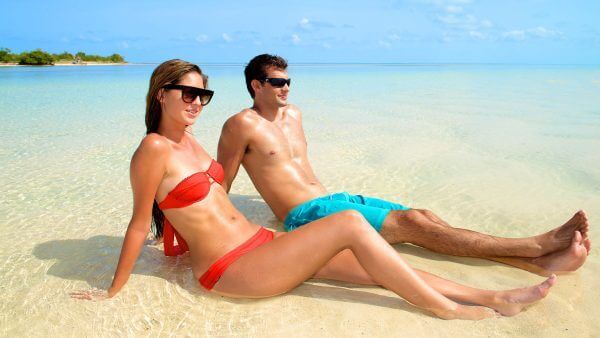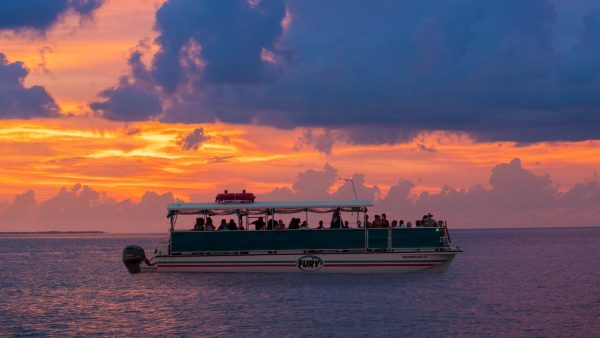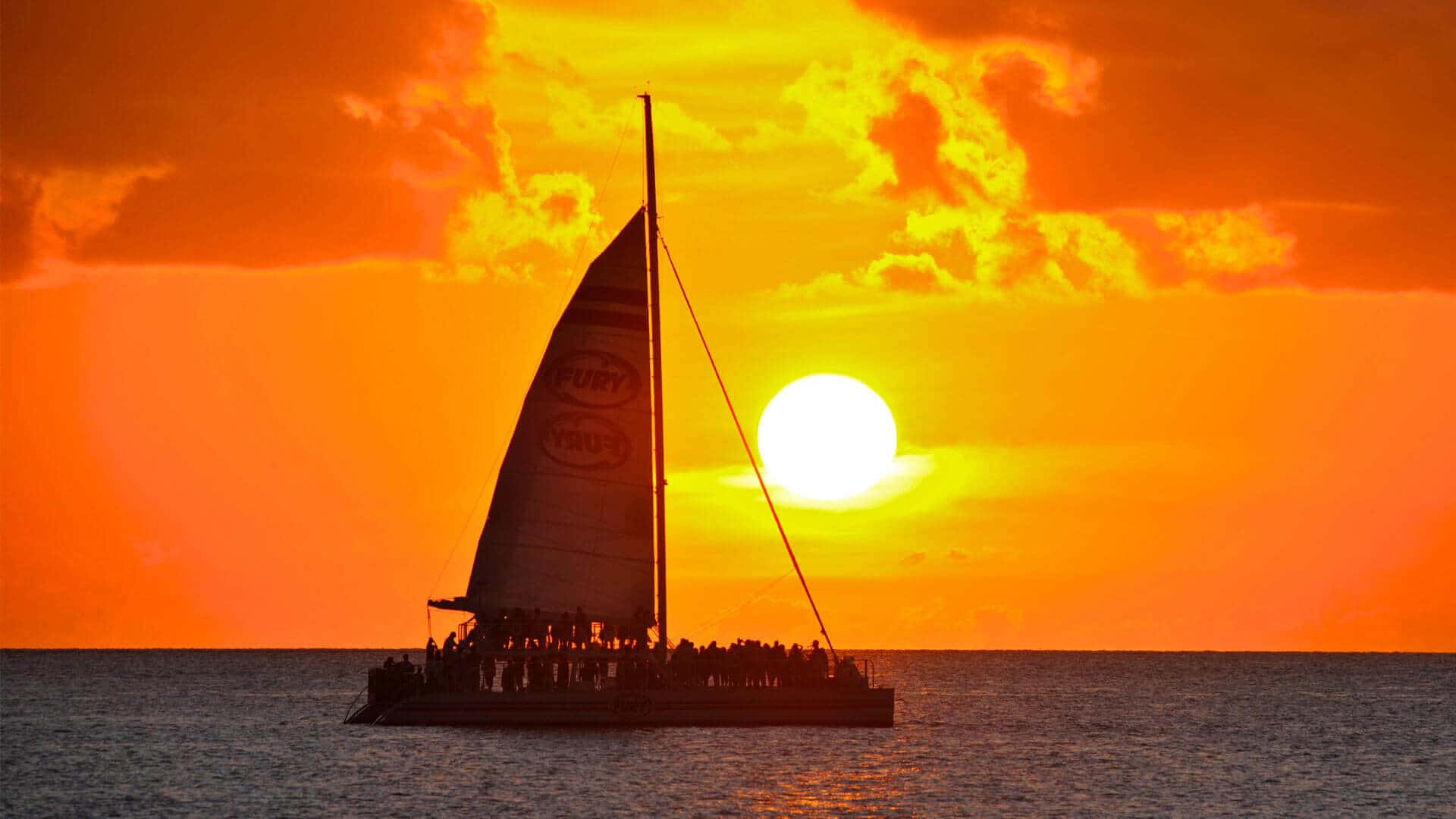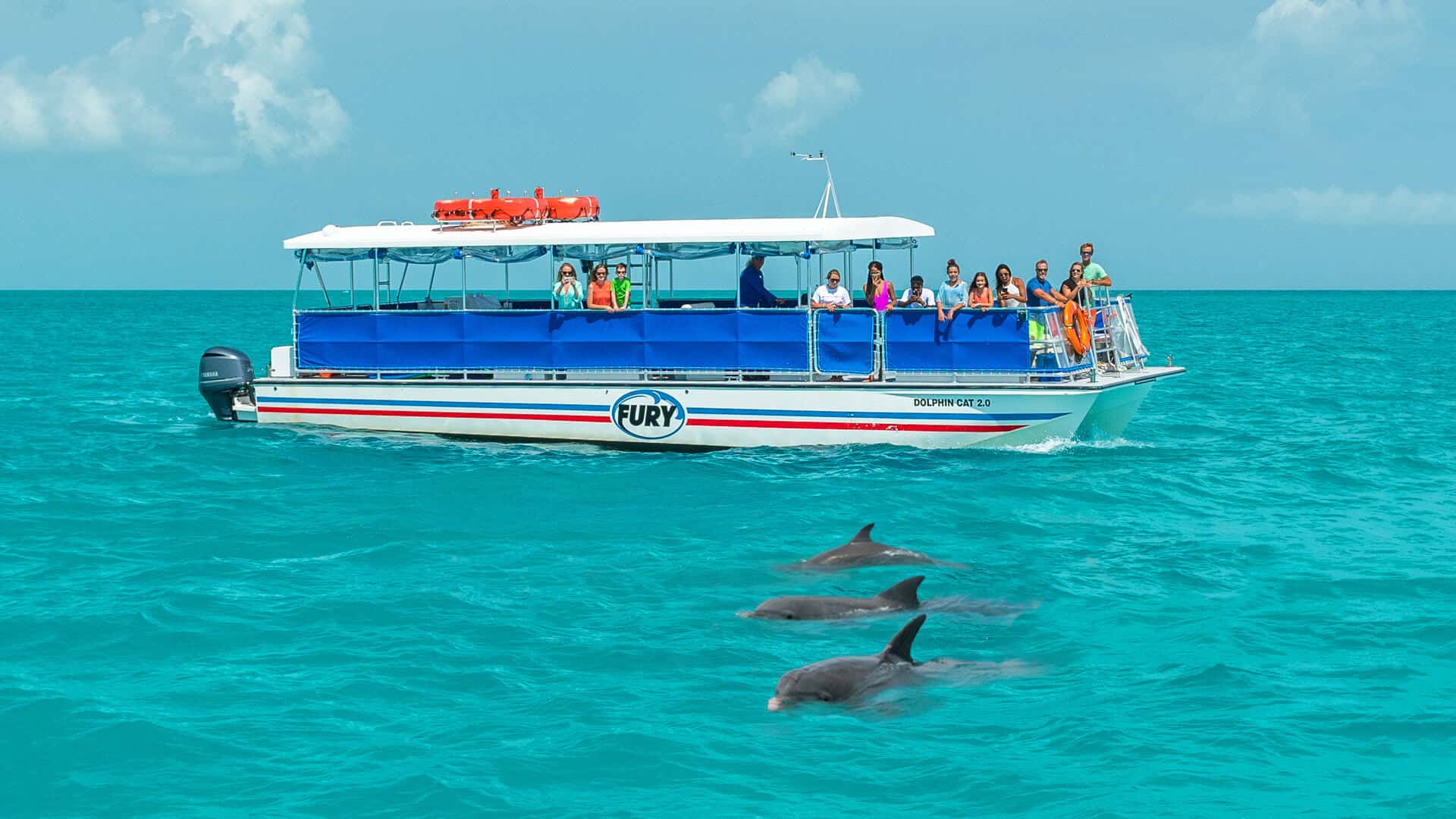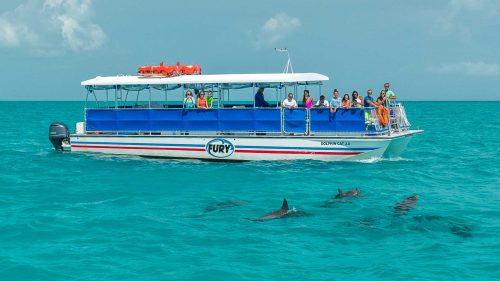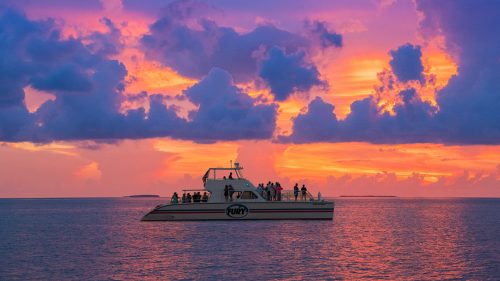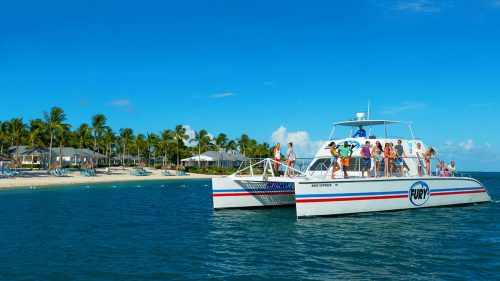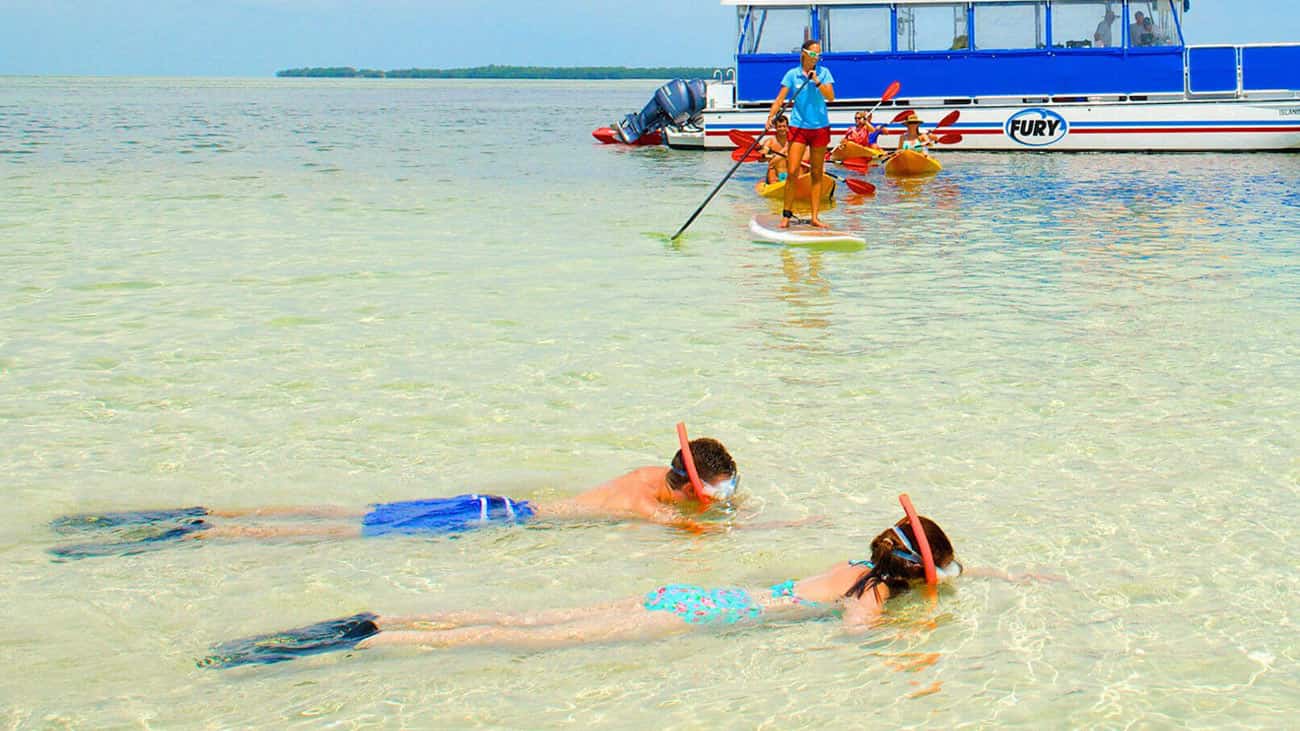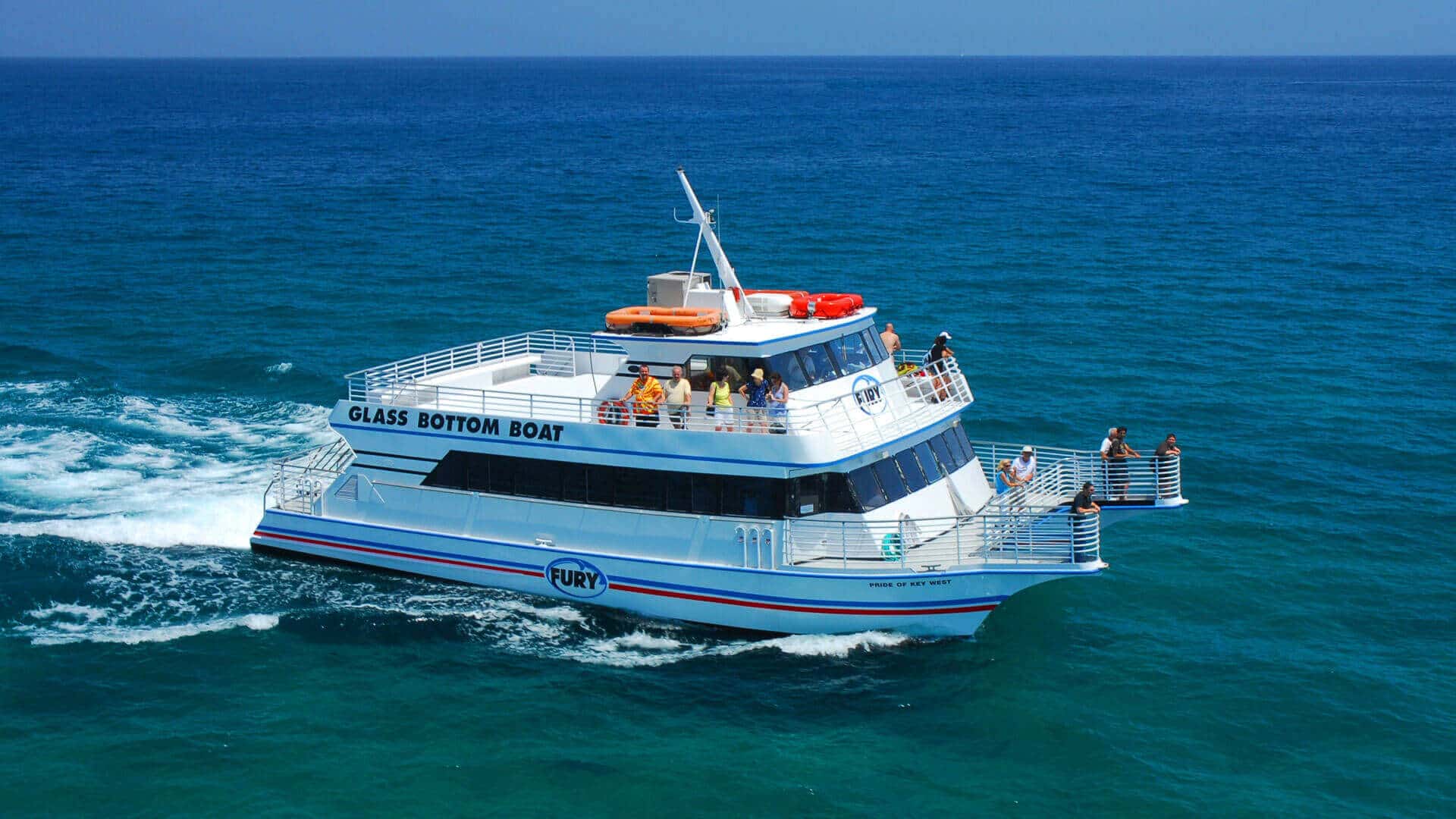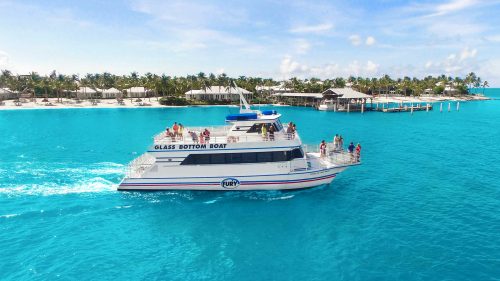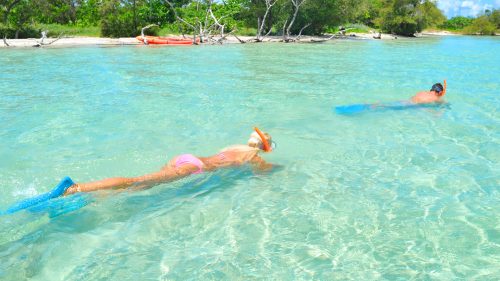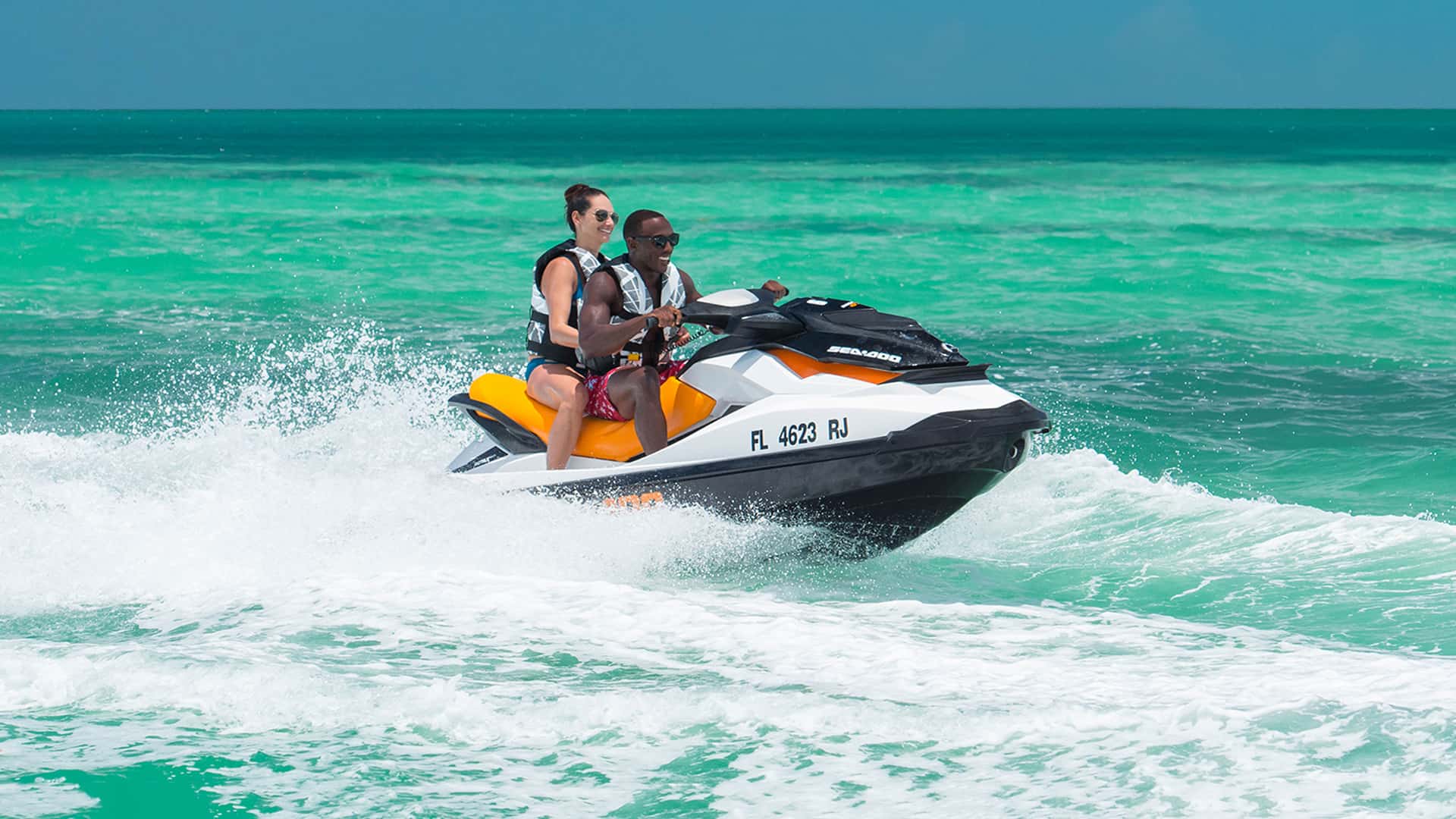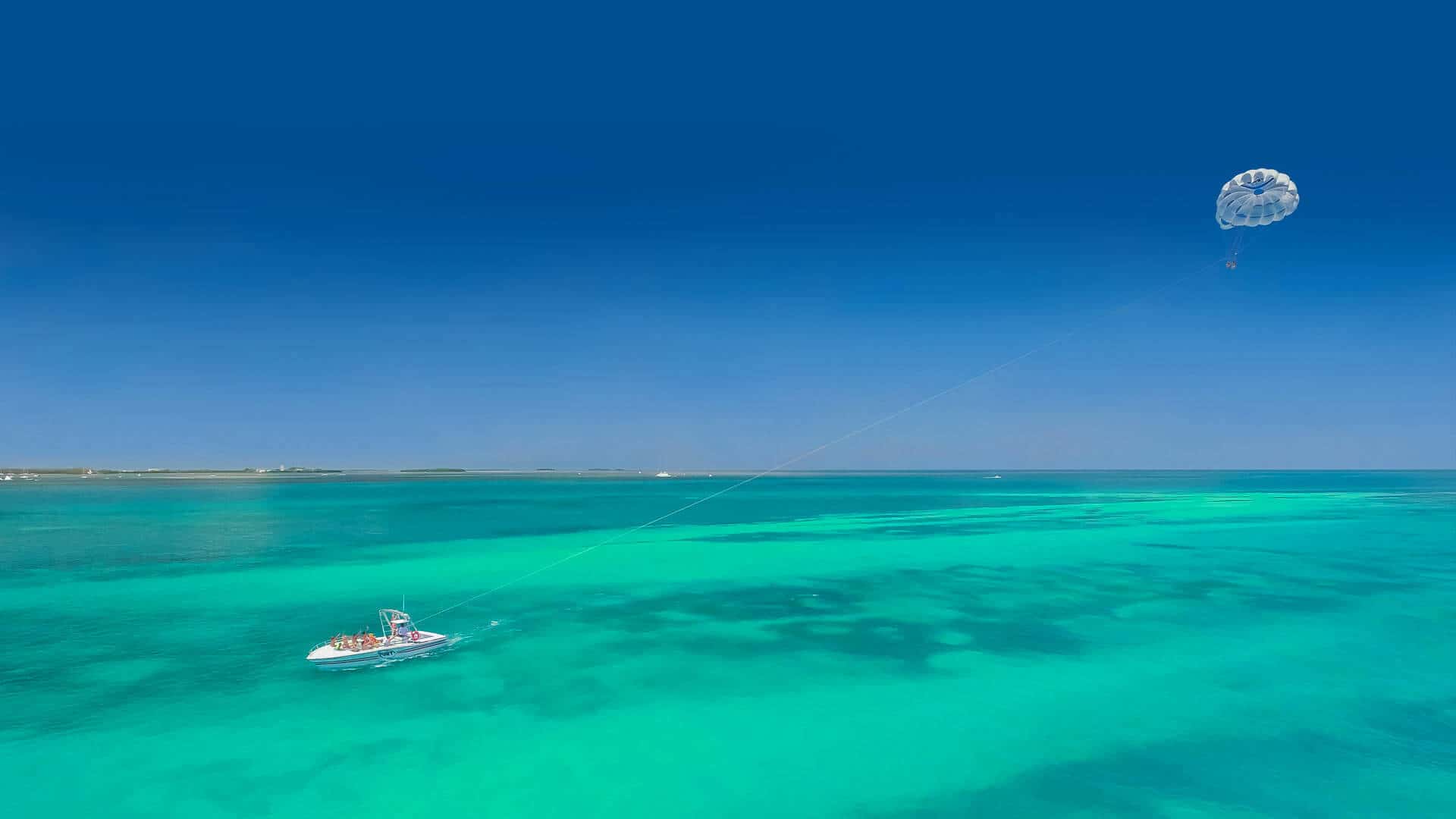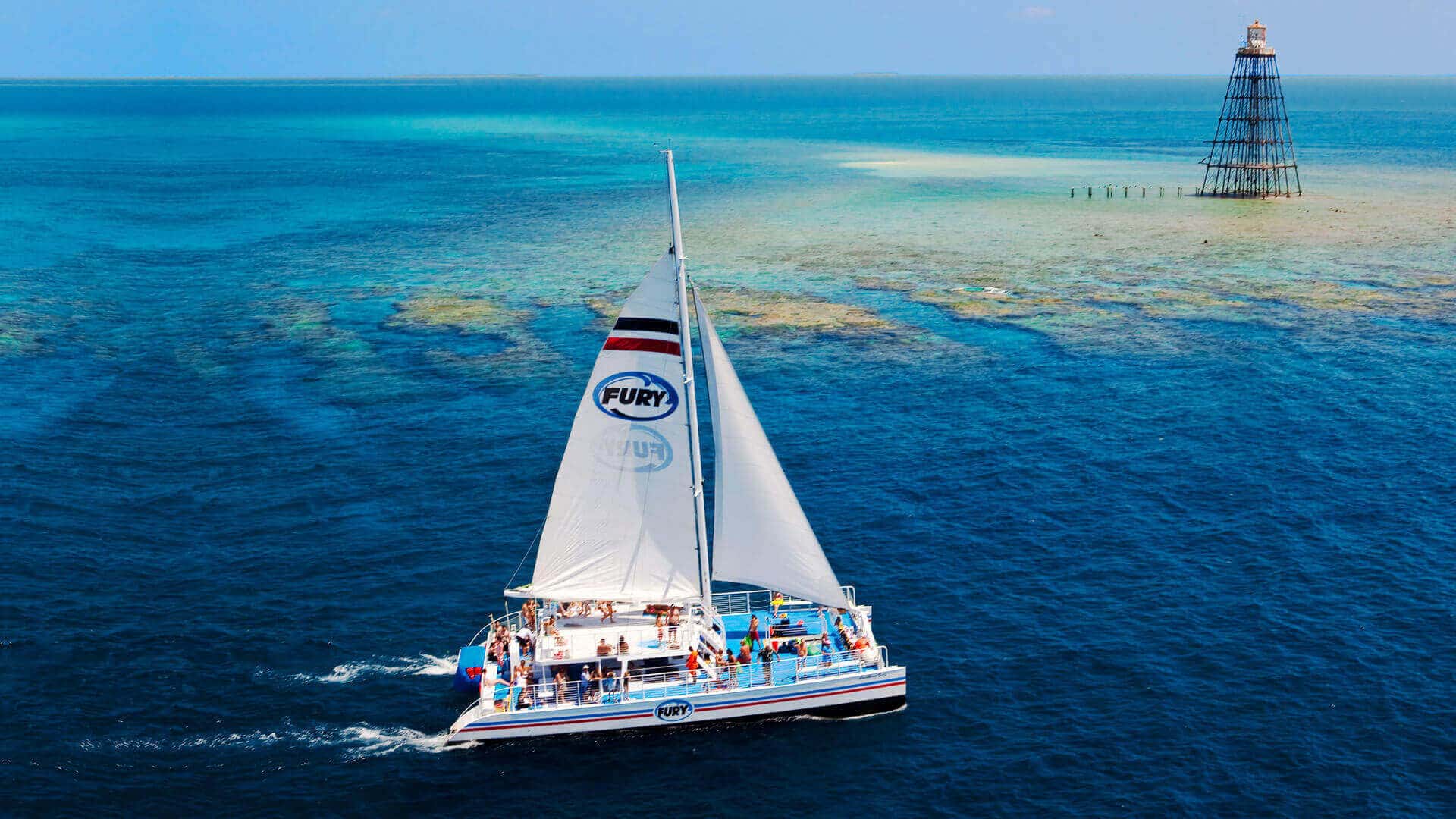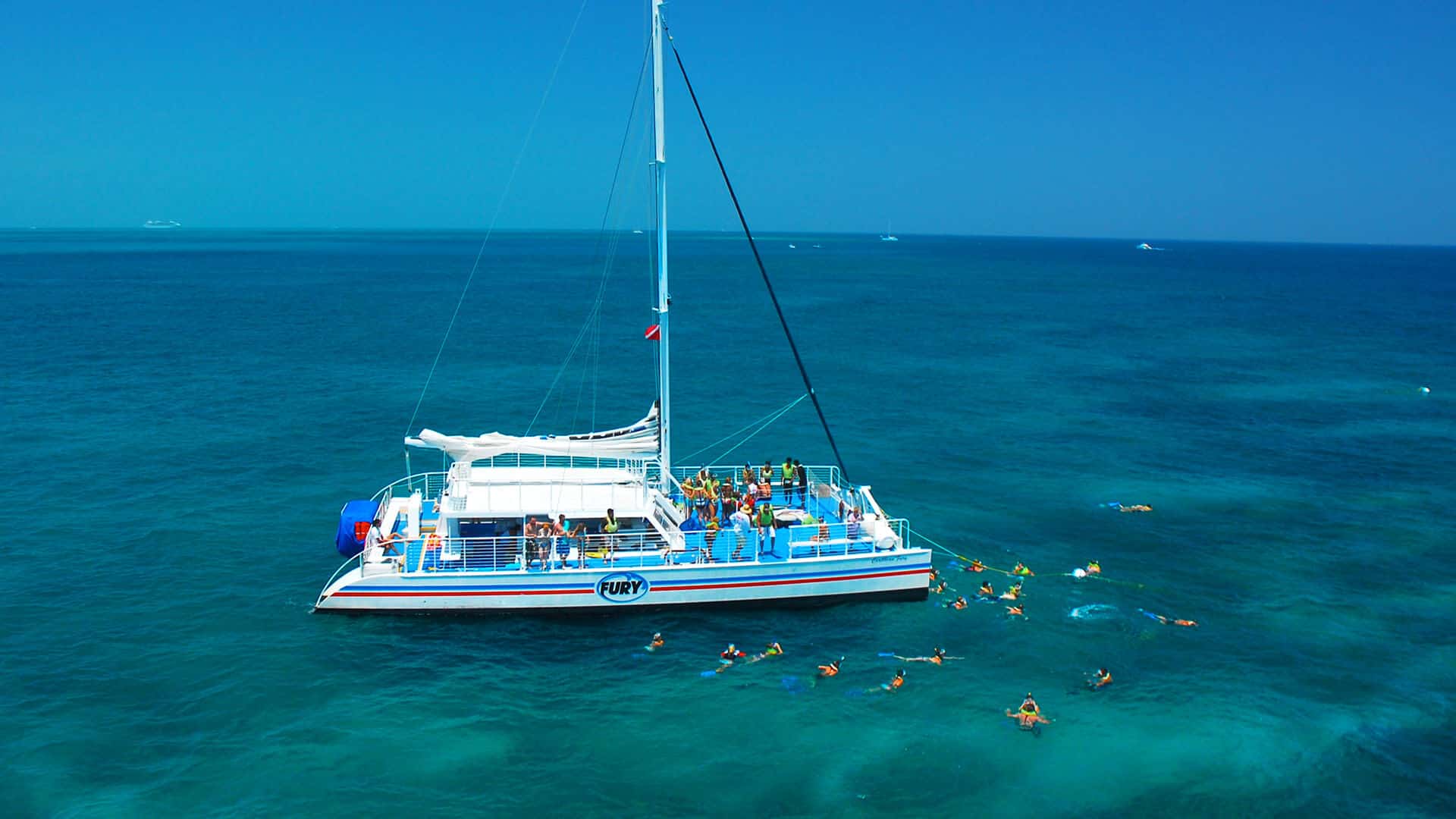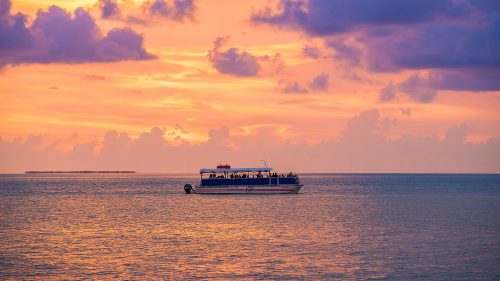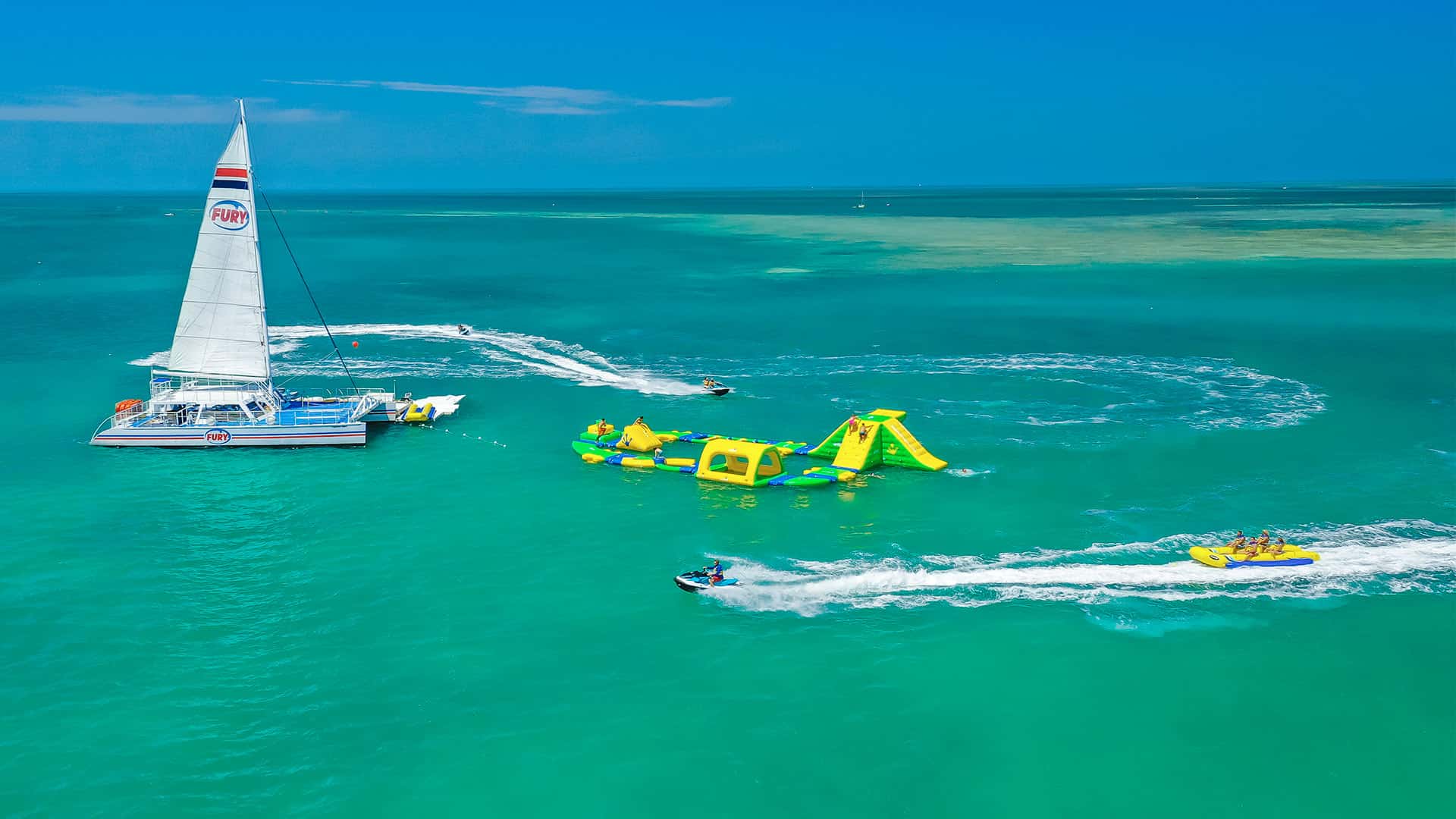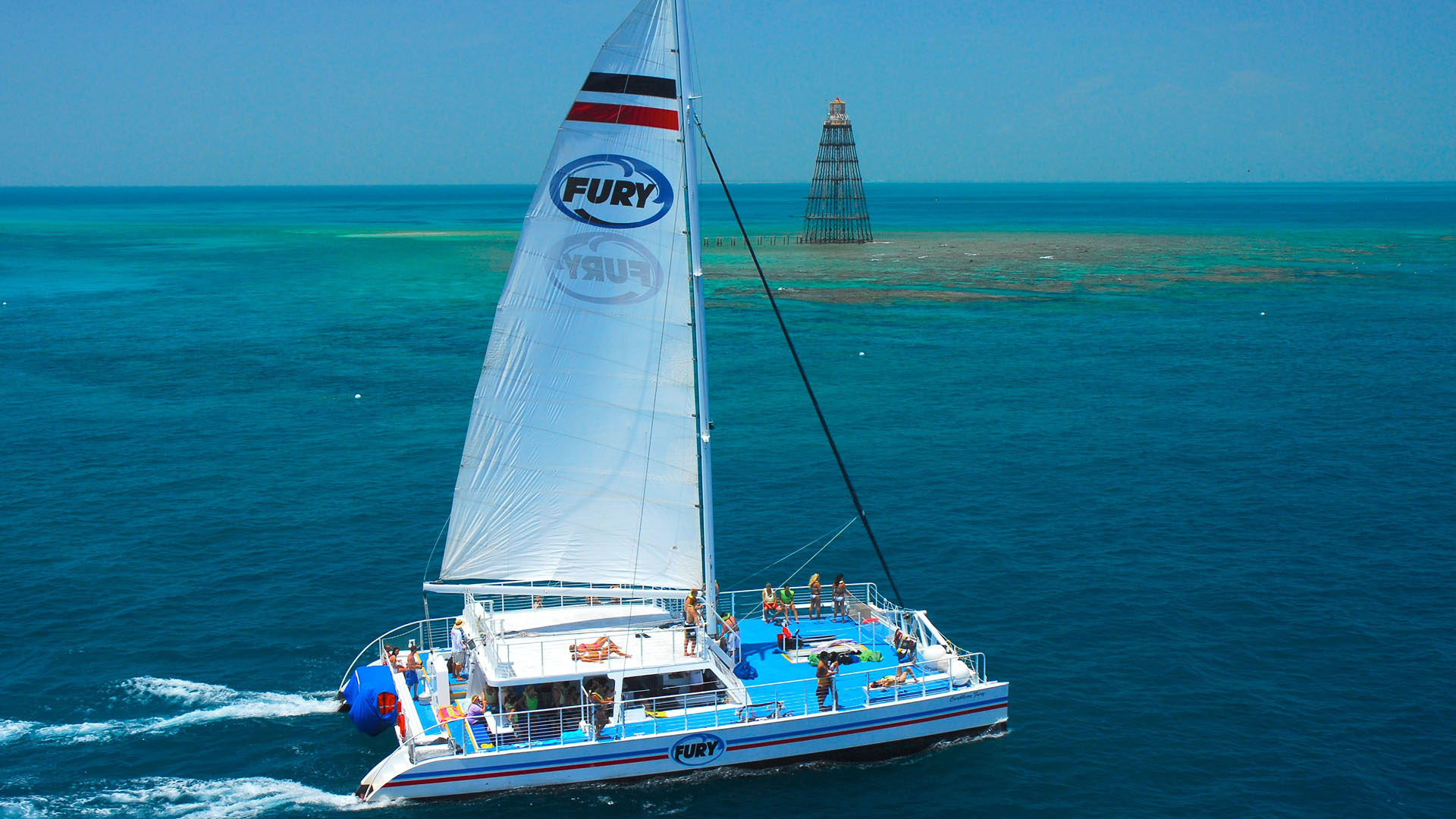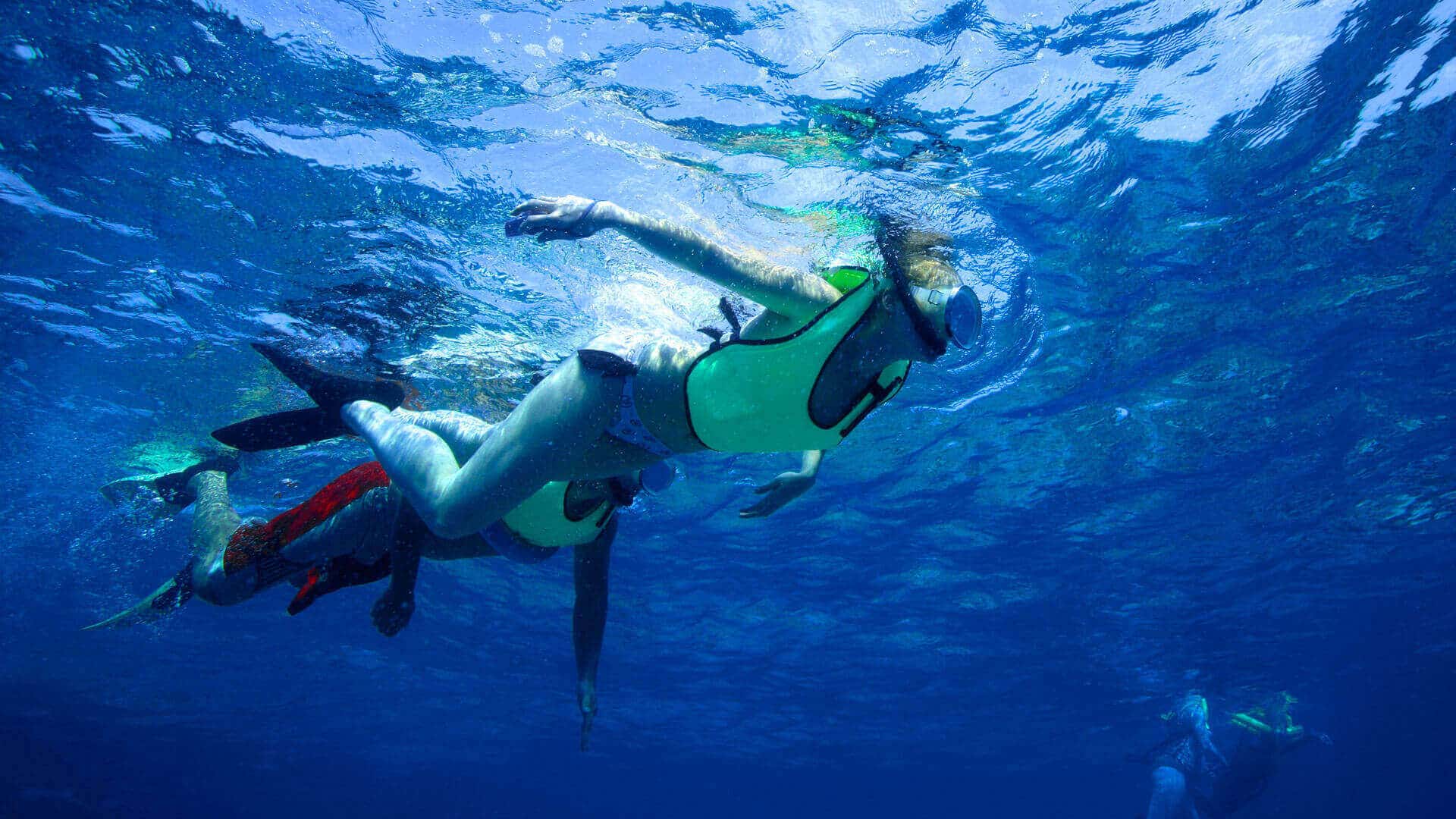Imagine soaring through the turquoise waters surrounding Key West accompanied by the majestic sea turtles that call them home. Whether you’re peering beneath the surface with a snorkel or taking in the breeze from the deck of a state-of-the-art catamaran, Key West is known for its undeniable natural beauty and wildlife — including sea turtles! The stoic sea creatures are mesmerizing to watch as they glide effortlessly from the Atlantic Ocean into the Gulf of Mexico. Ancient guardians of the reef, sea turtles have been around since the time of dinosaurs. With five of the seven sea turtle species calling the Florida Keys home, Key West tours stands out as an exceptional turtle sighting destination.
Fun Facts About Sea Turtles
Sea Turtles Are Air-Breathing Reptiles
While they live the vast majority of their lives in saltwater, sea turtles can hold their breath for up to two hours when resting. In fact, the only time sea turtles come on land is during nesting season. Female sea turtles will walk ashore during nesting season to lay up to 100 eggs at a time. Nesting season spans from March to October.
Baby Sea Turtles Are About Three Inches Long When They Hatch
Between 50 and 60 days after their eggs are laid, baby sea turtles hatch adorably small. They exercise their instincts fresh out of their eggs with a sprint toward the ocean to begin their lives of saltwater dwelling. The sight of hundreds of baby Key West sea turtles storming the shores in an instinctual, precious stampede is something to cherish forever.
Sea Turtles Feed on Jellyfish
A sea turtle’s diet varies from species to species, with most of them enjoying the occasional jellyfish. This makes ocean pollution especially dangerous for Key West sea turtles, as they often mistake plastic bags for jellyfish. Things like bags, cups and soda rings discarded in the ocean pose threats to the sea turtles, and can prove fatal if ingested. When in Key West, be sure to do your part to help Key West sea turtles.
Sea Turtles Have Long Life Spans
Loggerheads, one of the more common Key West sea turtles, are known to live up to 70 years. They can also grow to be much larger than people assume, some weighing up to 1,000 pounds! The best indicator of a sea turtle’s age is its size.
Different Types of Key West Sea Turtles
In total, there are seven different species of sea turtles. The Key West sea turtle population is mainly comprised of five of the seven — loggerheads, green sea turtles, hawksbill, Kemp’s ridley and leatherback — each displaying unique characteristics that add to their overall intrigue. These fascinating creatures of the sea have made Key West one of the best turtle-watching destinations in the United States.
Loggerheads
Scientific name Caretta caretta, the loggerhead sea turtle is named for its notably large head. These Key West sea turtles are typically 2.5 to 3.5 feet long in size and weigh anywhere from 155 to 375 pounds. Loggerheads have exceptionally strong jaws, which play a large role in their mainly carnivorous diet. These turtles feed mostly on shellfish that live on the ocean floor, such as horseshoe crabs, clams and mussels. They have no problem crushing the shellfish with their strong jaws. Female loggerheads are known to lay three to six nests over the season, each nest containing anywhere between 100 and 126 eggs. Today, the loggerhead faces a number of threats to survival, such as loss of nesting habitats, pollution and human disturbances that create disorientation among hatchlings making their way to the ocean at birth. Loggerheads are classified as a threatened species of sea turtle, likely to become endangered.
Green Sea Turtles
Scientific name Chelonia mydas, green sea turtles are named for the green color of the fat under their shells. These Key West sea turtles are distinguishable from other species by the single pair of scales in front of their eyes, whereas other species have two pairs. The green sea turtle ranges from 3 to 4 feet in length and can weigh anywhere between 240 and 420 pounds. The diet of the green sea turtle changes over the course of its life, beginning in omnivorous territory. However, as these turtles mature, their diet shifts to strictly herbivorous, and they are the only turtles to do so. Their finely serrated jaws assist them in tearing vegetation such as seagrass and algae. Female green sea turtles lay three to five nests every two years, each nest containing an average of 115 eggs. Today, incidental catch by commercial shrimp boats have proven to be one of the greatest threats to the survival of these Key West sea turtles. They are classified as threatened and likely to become endangered.
Hawksbill Sea Turtles
Scientific name Eretmochelys imbricata, the hawksbill sea turtle gets its name from its narrow head and hawk-like beak. This anatomical feature allows the hawksbill to feed from crevices in coral reefs. The hawksbill’s diet consists of sponges, anemones, squid and shrimp. This Key west sea turtle can range from 2.5 to 3 feet in length and weigh between 101 and 154 pounds. Female hawksbills nest in intervals of two to four years and build three to six nests per season. Each nest has an average of 160 eggs. Hawksbill turtles can usually be found around coastal reefs, rocky areas, estuaries and lagoons, making them the perfect Key West sea turtle. These beautiful creatures are classified as endangered, and are constantly threatened by harvesting of their prized shell.
Kemp’s Ridley Sea Turtles
Scientific name Lepidochelys kempil, Kemp’s ridley are named after scientist Richard Kemp, who is credited with the discovery of the species. Relatively small compared to other Key West sea turtles, Kemp’s ridley measure around 2 feet in length and weigh between 70 and 108 pounds. These Key West sea turtles are known to nest more frequently than other species of turtles, making the trip to shore every one to three years on average. Kemp’s ridley partake in mass synchronized nestings called arribadas and nest two to three times a season. These nests contain an average of 110 eggs each. With powerful jaws, Kemp’s ridley feed on crabs, clams, mussels and shrimp, as well as fish, sea urchins and jellyfish. This gracious turtle is listed as endangered and faces major threats from human activity, including hunting and collection of eggs.
Leatherback Sea Turtles
Scientific name Dermochelys coriacea, the leatherback is the largest sea turtle and the largest living reptile in the entire world! These sea turtles can grow to be 8 feet in length and weigh up to 2,000 pounds. They are the only sea turtle that lacks a hard, outer shell and is most known for its leathery black or brown skin. These characteristics are what gave the leatherback sea turtle its name! Leatherback sea turtles feed mostly on soft-bodied animals, such as jellyfish, consuming nearly their own body weight in prey every day. The female leatherbacks are known to lay 5 to 7 nests over the season with around 100 billiard ball sized eggs in each. These eggs take about 2 months to hatch where they will then make their way to the sea! Only around 6 percent of hatchlings survive their first year. The leatherback sea turtle is listed as endangered under the Endangered Species Act.
The Best Ways to See Sea Turtles in Key West
Snorkeling with Fury Water Adventures
Fury offers a wide array of snorkeling packages that put you in the best position to become acquainted with Key West sea turtles. Watch those stoic beauties soar through the water with grace while exploring the wonders of the reef. Make your way beneath them to get a view like no other, and see how long you can keep up with the majestic Key West sea turtles. Start your day bright and early with Fury’s Morning Reef Snorkel, or give yourself the best chance of meeting a sea turtle with Fury’s Double Dip Snorkel trip, taking you to two unforgettable reef locations. Have the day of your dreams on Fury’s Rum & Reggae Snorkel Sunset Combo! Whatever you decide, Fury has the hookup with spectacular Key West sea turtles.
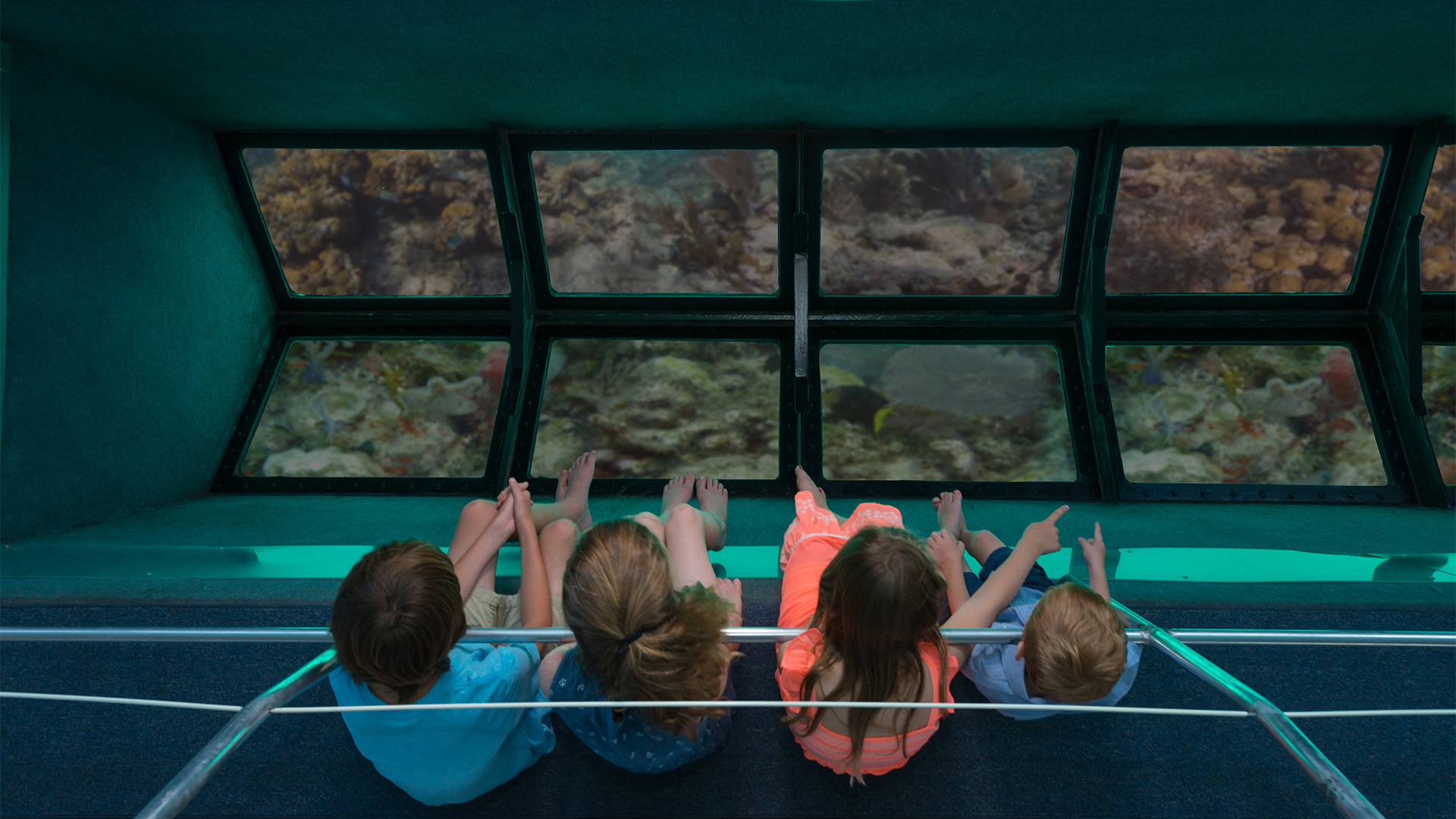
Fury’s Glass Bottom Boat
This one-of-a-kind experience brings you up close and personal with the magnificent Key West sea turtles as they swim graciously along the reef — without having to leave the comfort of the enclosed, air-conditioned viewing area. Perfect for families and those who want to stay dry, Fury’s Glass Bottom Boat is the best way to see North America’s only living reef without sacrificing an ounce of comfort. While on the boat, be sure to keep your focus on the surface, looking for bubbles or a splash, which indicates a loggerhead is about to take a deep dive! There is all this and more to see with Fury’s Glass Bottom Boat.
Fury Can Take You There!
However you hope to achieve your encounter with the magnificent sea turtles of Key West, know that Fury is your best option to get you there! Whether deciding to embark on any number of the reef snorkeling trips they offer, all setting out on state-of-the-art catamarans, or jumping aboard the one-of-a-kind Glass Bottom Boat, there is no better way than with Fury. Trust the largest and most luxurious fleet of catamarans in the Florida Keys to bring you to the best open-water action out there!
FAQs
Where are the best places to view sea turtles?
The best place to spot Key West sea turtles would be offshore, around the coral reef.
Are there sea turtles in Key West?
There sure are! Five of the seven different species of sea turtle can be found in the waters surrounding Key West.
Are sea turtles endangered?
Many species of sea turtle are classified as either threatened or endangered.
What is the best way to see sea turtles?
The best ways to spot a Key West sea turtle would be snorkeling or a glass-bottom boat, both made available by your friends at Fury.
When do sea turtles come on land?
Sea turtles only come on land during the nesting season, from March to October.

